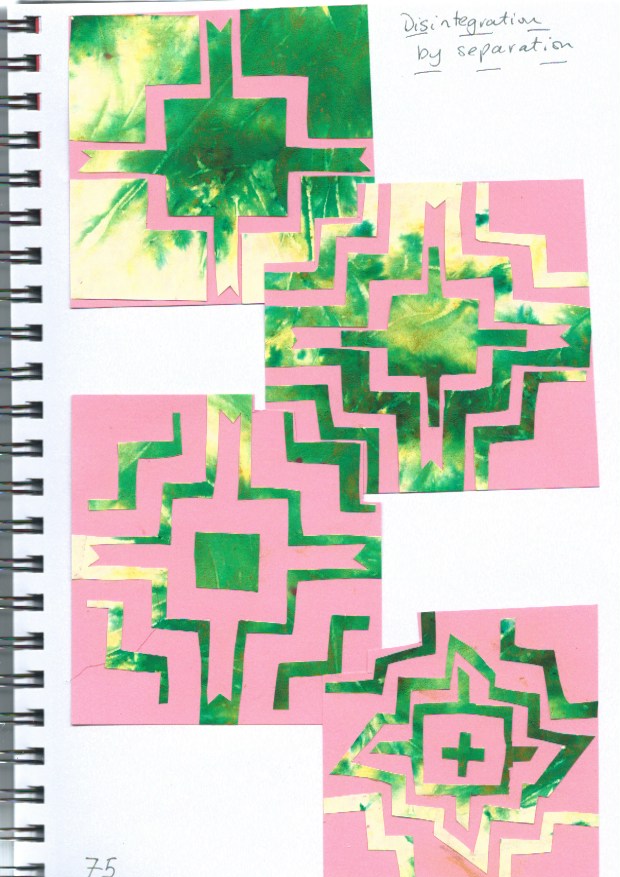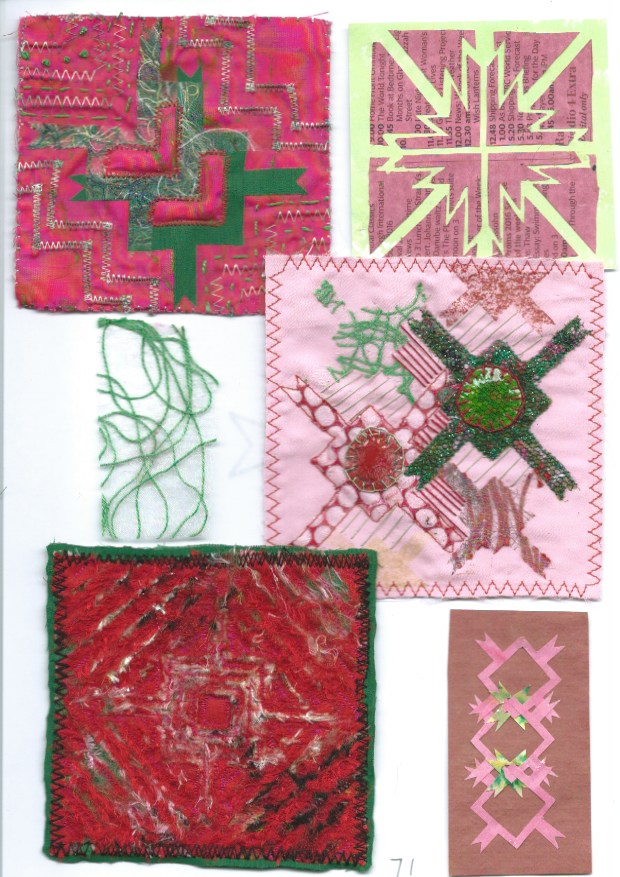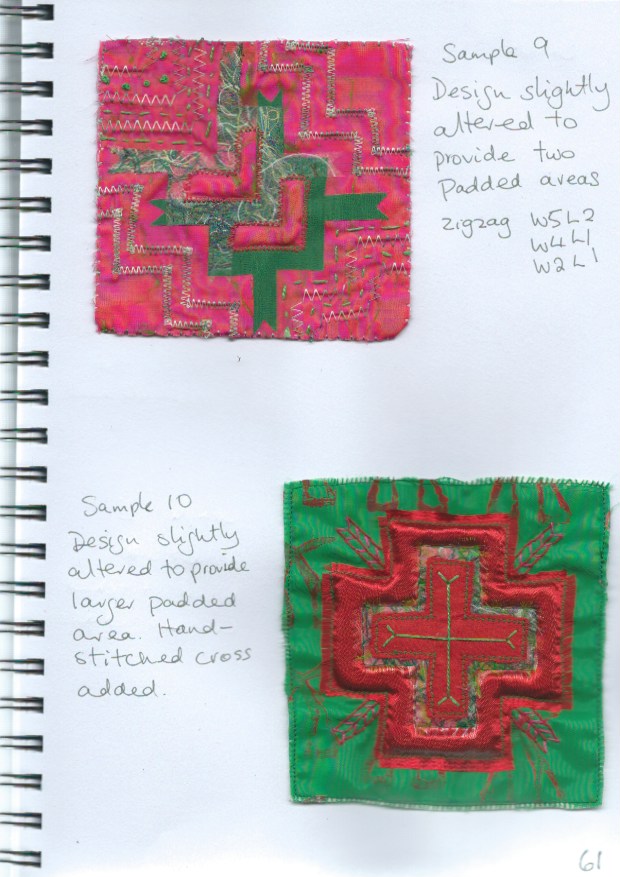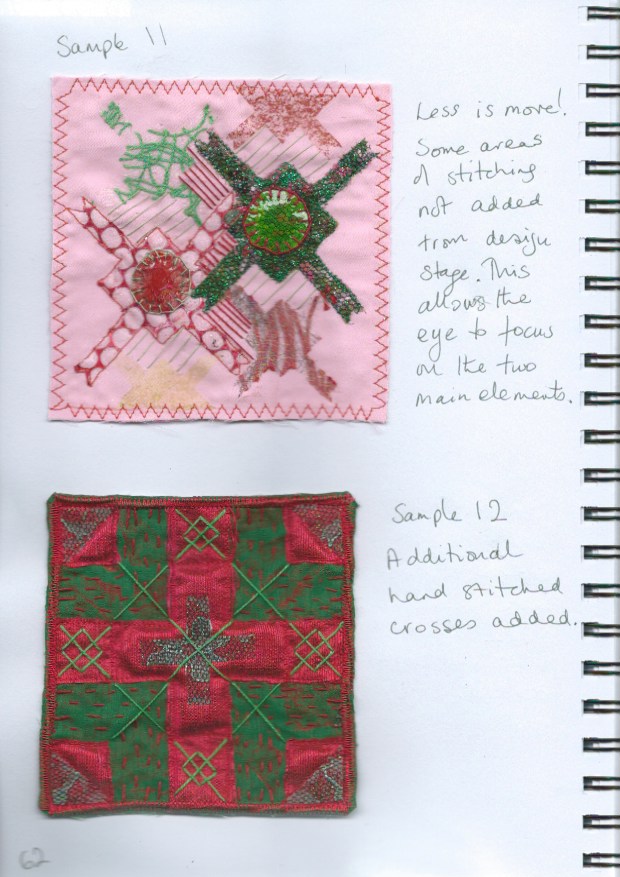| Graph Paper |
£3.00
|
| Glue |
£5.00
|
| Fabrics and Threads |
£10.00
|
| Books/Magazines |
£18.00
|
| Gouache Paint |
£2.00
|
| Brusho Paint |
£3.00
|
| Sundries |
£14.00
|
| TOTAL |
£55.00
|
Time Log
From 22 Aug 16 - 10 Dec 16
| Chapter 1 | 23 hrs |
| Chapter 2 | 14 hrs |
| Chapter 3 | 38 hrs |
| Chapter 4 | 12 hrs |
| Chapter 5 | 6.5 hrs |
| Chapter 6 | 6.5 hrs |
| Chapter 7 | 18 hrs |
| Chapter 8 | 19.5 hrs |
| Chapter 9 | 11 hrs |
| Chapter 10 | 11.5 hrs |
| Chapter 11 | 19 hrs |
| Chapter 12 | 31 hrs |
| Chapter 13 | 8 hrs |
| TOTAL | 218 hrs |
Storage of Materials and Equipment
I keep my materials in clear plastic boxes with labels indicating the contents - Current, Sheers and Nets, Felt, Paper and Card, Wool, Silk, Quilting, Embellishments, Stamps, Found Objects, Odds, Paper Patterns, Wool. I have four boxes of fabric which are sorted by colour not texture, as I have found that this works better for me. Paints and electrical items are stored in cupboards. I use the 'Current' box for work in progress, as well as a pin board.
Health and Safety
I sit on a cushion when working at the sewing machine as this raises me to a comfortable position for working.
When using paint and inks I always wear an overall and plastic gloves to protect my clothes and hands.
When using a soldering iron I use an upturned flowerpot as a stand and work on a piece of glass. The edges of the glass are covered in tape for protection. I also wear a mask to avoid inhaling fumes.
Evaluation of Module 1
This module has introduced me to the process of designing my own work. It has shown me how to develop an idea from a sketch to a finished sample.
I have learnt to take time to let an idea develop in my head and then to put it down on paper. By using cut shapes I have been able to look at many different variations of a simple design and play around until the design looks 'just right'.
I am pleased with my resolved sample. I wanted to create the impression of shapes floating and then being drawn into the light to burn up. I think I have achieved this.
Working through the chapters has been very enjoyable and I have learnt to pace myself and to stop when I am feeling tired - a difficult lesson!


















































